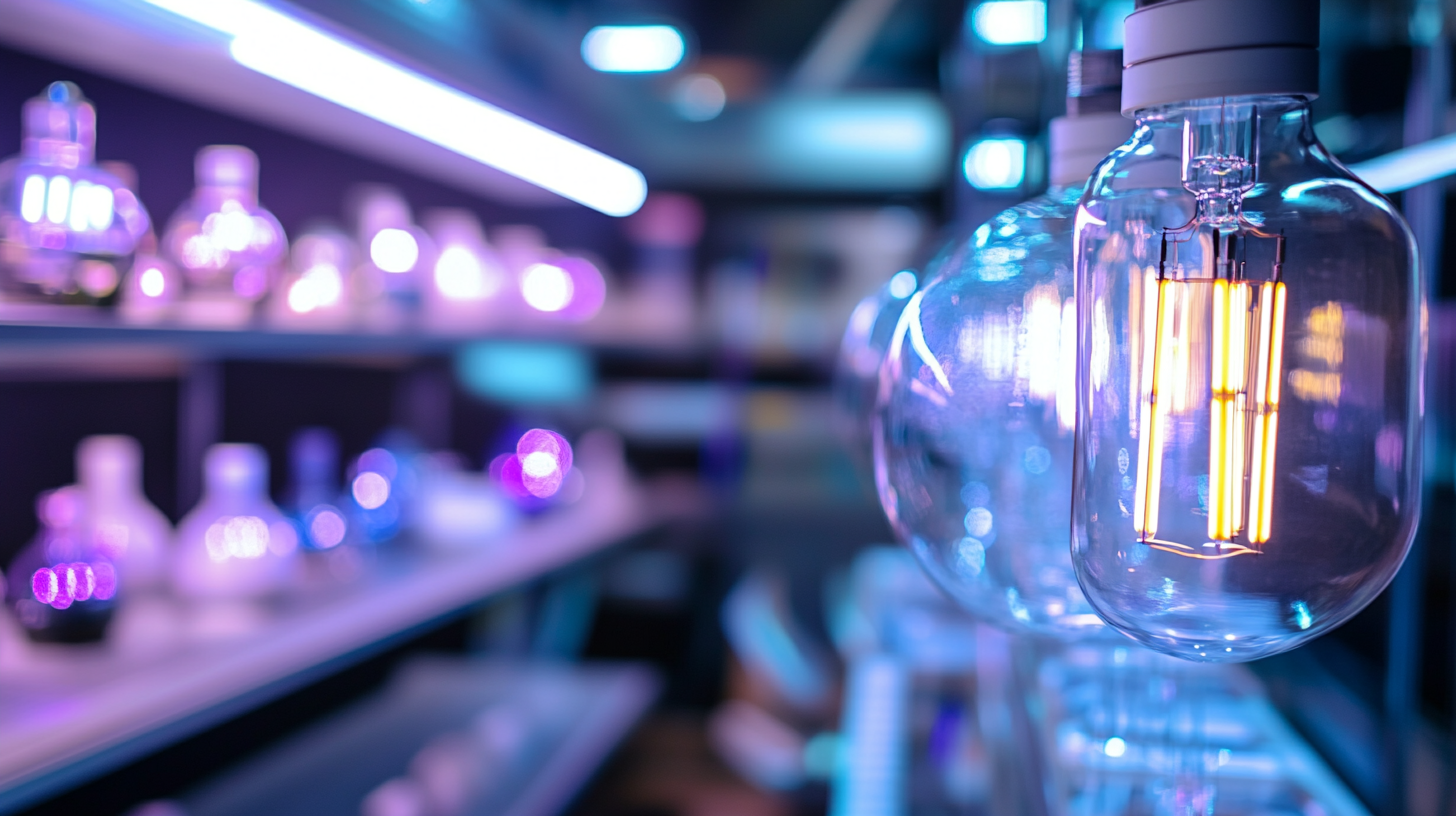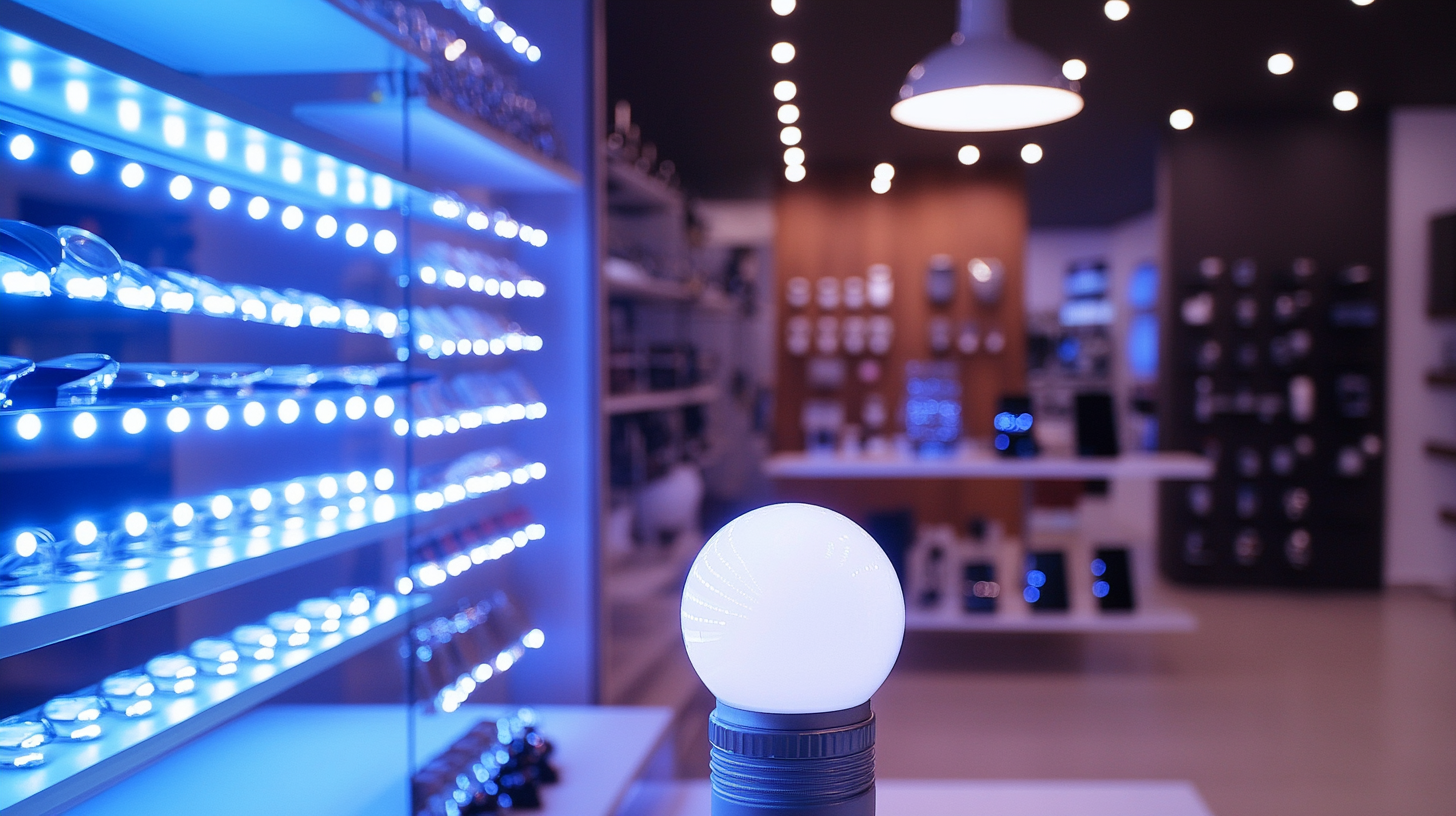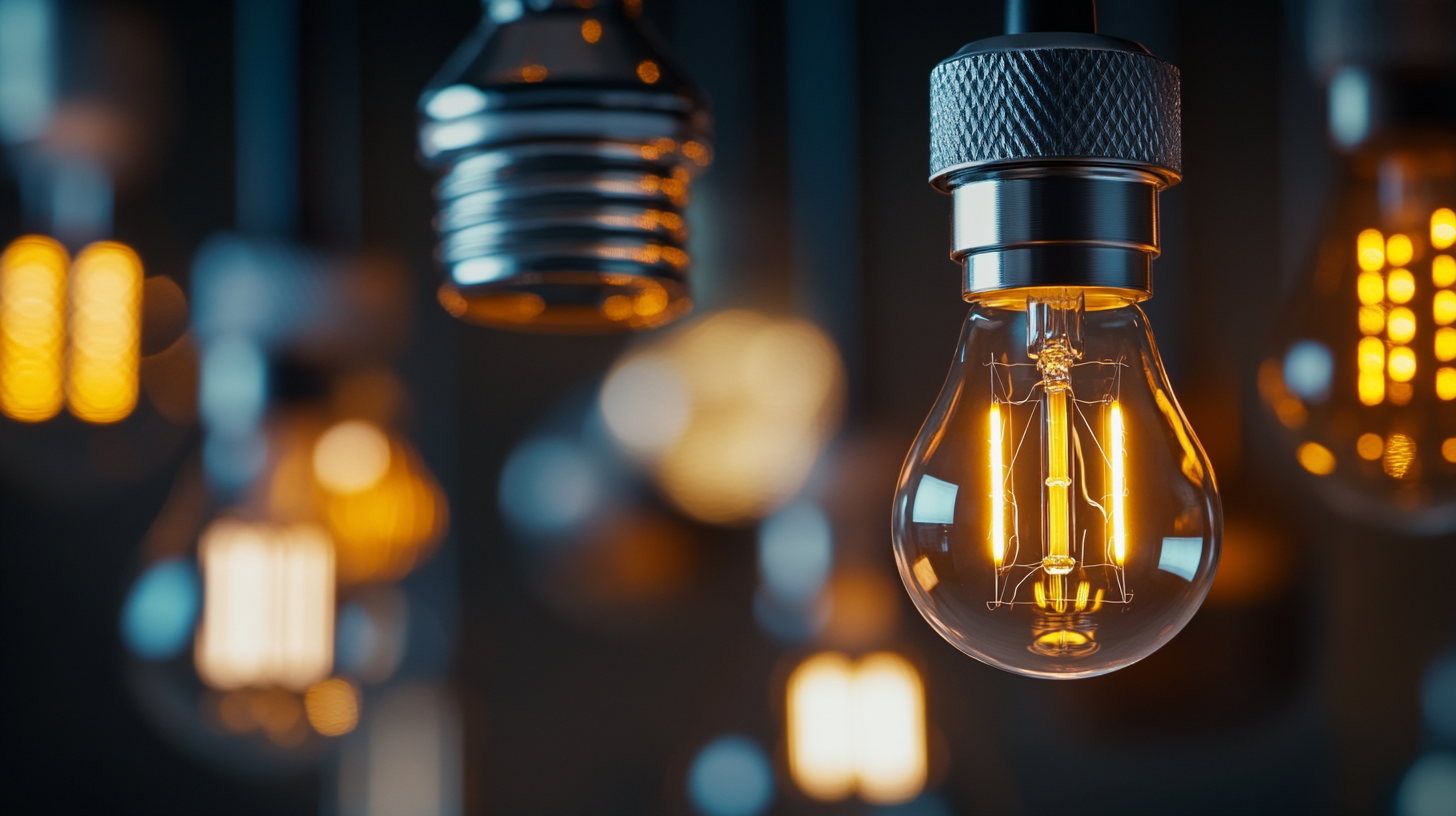Exploring the Technical Specifications of Best Led Lamps and How to Choose the Right One
In today's world, lighting technology has evolved significantly, with
LED lamps at the forefront of this transformation. Choosing the right LED lamp can be a daunting task, especially with the myriad of options available in the market. The technical specifications of LED lamps often play a crucial role in their performance, efficiency, and suitability for various applications.
 However, many consumers face challenges in understanding these specifications, leading to common problems associated with selecting inadequate lighting solutions. This blog aims to explore the intricate details of the best LED lamps, including their key features, benefits, and the typical mistakes to avoid when making a purchase.
However, many consumers face challenges in understanding these specifications, leading to common problems associated with selecting inadequate lighting solutions. This blog aims to explore the intricate details of the best LED lamps, including their key features, benefits, and the typical mistakes to avoid when making a purchase.
By the end, readers will be equipped with the knowledge to make informed decisions, ensuring they choose the perfect LED lamps for their needs while maximizing both functionality and energy efficiency.
Understanding LED Lamp Basics and Features
When exploring the world of LED lamps, understanding the basics and features is essential for making the right choice. LED lamps have surpassed traditional lighting options due to their energy efficiency, longevity, and versatility in design. They come in various shapes and sizes, each suited to different applications, whether it's for home décor, outdoor use, or automotive lighting.
When selecting an LED lamp, consider factors such as lumens (brightness), color temperature (warm or cool light), and wattage. Tips for choosing the right one include examining the intended use: for task lighting, opt for brighter options with higher lumens; for ambiance, select lamps with adjustable brightness or softer color temperatures. Additionally, pay attention to the lamp's compatibility with smart home systems if you seek modern conveniences.
The design of the LED lamp also plays a pivotal role in its effectiveness. A well-designed lamp not only enhances the functionality of the space but also complements the aesthetic. Look for features like dimmability, color-changing functions, or even innovative designs that can elevate your environment while ensuring safety and efficiency.
Exploring the Technical Specifications of Best LED Lamps and How to Choose the Right One
| Feature | Description | Example Value |
|---|---|---|
| Wattage | The amount of energy consumed by the lamp. | 9W - 20W |
| Luminous Flux | The total amount of visible light emitted by the lamp, measured in lumens. | 800 - 1600 lumens |
| Color Temperature | Measured in Kelvin (K), this indicates the color of the light emitted. | 3000K - 6500K |
| Lifespan | The average time duration the lamp will last before it needs replacement. | 15,000 - 50,000 hours |
| Beam Angle | The angle at which light is emitted, which affects how the light is distributed. | 120° - 360° |
| Dimmer Compatibility | Refers to whether the lamp can be used with dimmer switches. | Yes/No |
| Energy Efficiency Rating | An indication of the energy efficiency of the lamp. | A - A+++ (highest) |
Key Technical Specifications to Consider When Choosing LED Lamps
When selecting the right LED lamp, several key technical specifications should be considered to ensure optimal performance and energy efficiency. Lumens, which measure brightness, are crucial; modern LED technology can provide up to 130 lumens per watt, significantly improving energy consumption compared to traditional lighting. Color temperature, expressed in Kelvins, further influences the ambiance of a space. For instance, a temperature of 2700K offers a warm, inviting glow, while 5000K provides a cooler, daylight-like effect.

In recent advancements, Micro LED technology has emerged as a game-changer in various lighting applications, including automotive and HUD systems. Micro LED solutions are capable of producing over 160,000 pixels in compact designs, providing high-resolution displays and better power efficiency. As this technology becomes more accessible, consumers can expect to see improved lighting quality and versatility in everyday applications such as smart lamps and home lighting setups. The industry trend leans towards enhanced color rendering and lower heat generation, making these advanced LED lamps an attractive option for both consumers and manufacturers.
Comparative Analysis of Popular LED Lamps in 2025 Market
In 2025, the LED lamp market is more vibrant than ever, with numerous options catering to diverse needs. Various brands have emerged with innovative designs and technologies, making it imperative for consumers to navigate this landscape thoughtfully. Popular choices include Philips Hue, which offers smart lighting features, and GE's Reveal LED that emphasizes color accuracy. Each model brings distinct advantages, such as energy efficiency, longevity, and aesthetic appeal, allowing consumers to select based on personal preferences.
When choosing the right LED lamp, consider the color temperature that fits your space. Warm white (2700K) creates a cozy atmosphere, making it ideal for homes, while cool white (4000K) works well in workspaces to enhance concentration. Moreover, brightness, measured in lumens, is crucial; ensure the lumens align with the intended use—higher for task lighting and lower for ambient lighting.
Tip: Always check for certification labels, such as Energy Star, to ensure the efficiency and safety of your LED lamp. Additionally, evaluate the dimming capability of your chosen lamp, as this can significantly impact the ambiance of your environment, offering flexibility for various activities.
Comparative Analysis of LED Lamps in 2025 Market
This chart illustrates the luminous efficiency (lm/W) and lifespan (hours) of various LED lamps available in the 2025 market. Users can assess which LED lamps offer the best performance in terms of energy consumption and longevity.
Sustainability and Energy Efficiency in LED Lighting Solutions
 When considering LED lighting solutions, sustainability and energy efficiency are paramount. The U.S. Department of Energy reports that LED bulbs use at least 75% less energy than traditional incandescent bulbs and last up to 25 times longer. This significant reduction in energy consumption not only contributes to lower electricity bills but also plays a vital role in decreasing overall carbon footprints. As smart grids and renewable energy sources become more prevalent, the integration of energy-efficient LED lighting solutions will further enhance sustainable practices across various sectors.
When considering LED lighting solutions, sustainability and energy efficiency are paramount. The U.S. Department of Energy reports that LED bulbs use at least 75% less energy than traditional incandescent bulbs and last up to 25 times longer. This significant reduction in energy consumption not only contributes to lower electricity bills but also plays a vital role in decreasing overall carbon footprints. As smart grids and renewable energy sources become more prevalent, the integration of energy-efficient LED lighting solutions will further enhance sustainable practices across various sectors.
Additionally, the environmental benefits of LED technology are profound. A study conducted by the Natural Resources Defense Council (NRDC) indicated that if all households in the U.S. replaced one incandescent bulb with an LED, the reduction in greenhouse gas emissions would be akin to taking over a million cars off the road for a year. This highlights the potential for LED lights to contribute to large-scale sustainability efforts. Incorporating LED lighting not only aligns with environmental goals but also meets consumer demand for energy-efficient products, making them a smart choice for modern homes and businesses looking to invest in a sustainable future.
Future Trends in LED Technology and Market Predictions for 2025
As we venture into the future of LED technology, several trends are anticipated to shape the market by 2025. The global LED market is projected to reach $100 billion, driven by advancements in energy efficiency and smart lighting solutions. According to a report by MarketsandMarkets, the solid-state lighting market is expected to grow at a CAGR of 8.4%, reflecting the increasing preference for sustainable lighting options among consumers and businesses alike.
One major trend is the integration of IoT technology with LED lighting systems. This innovation allows for smarter energy management and enhanced user control. For example, smart LED lamps can adjust their brightness based on the time of day or occupancy, significantly reducing energy consumption. Experts suggest that by 2025, nearly 50% of commercial spaces will be equipped with smart lighting systems, transforming how we interact with our environments.
